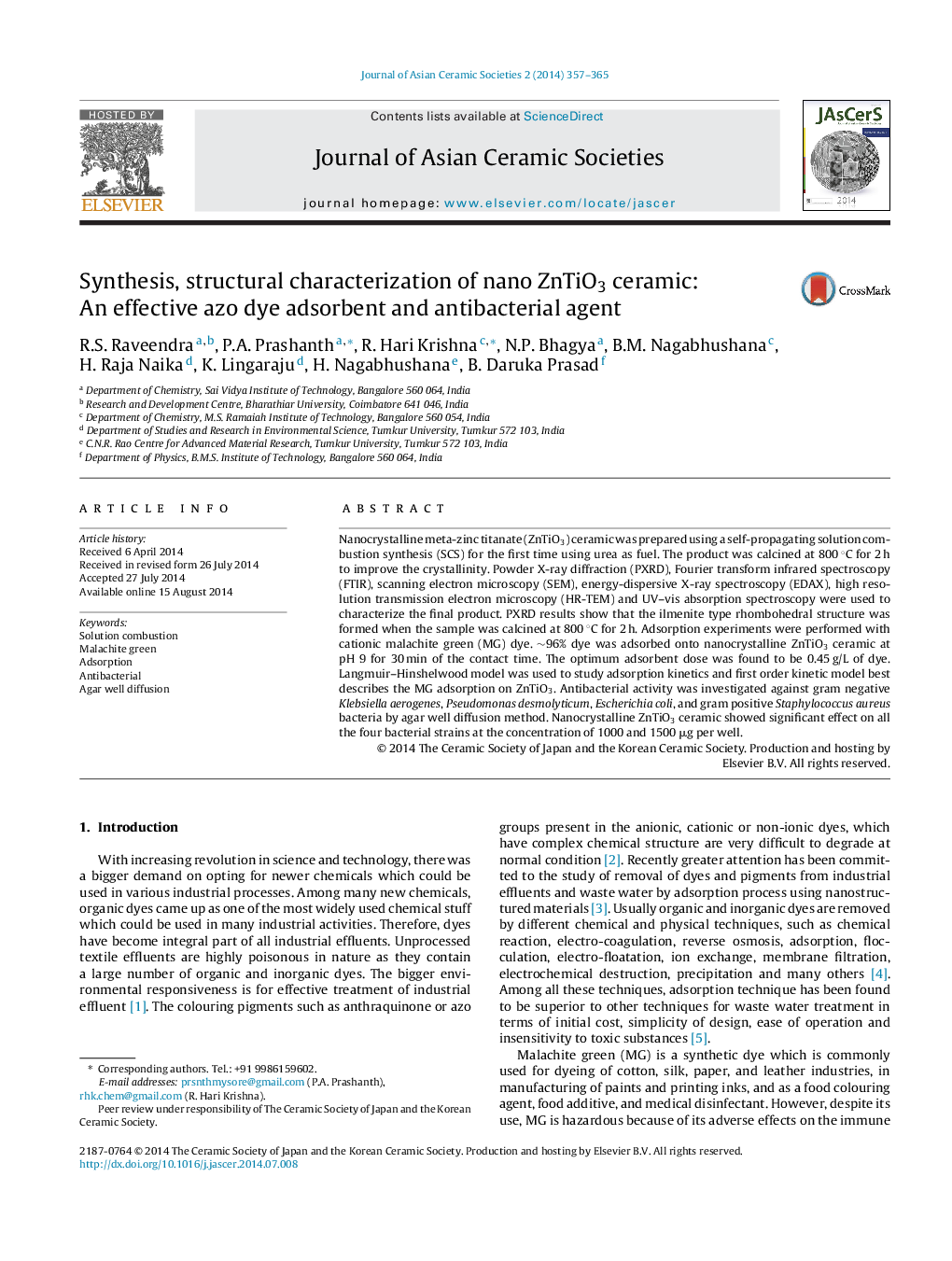| Article ID | Journal | Published Year | Pages | File Type |
|---|---|---|---|---|
| 1473348 | Journal of Asian Ceramic Societies | 2014 | 9 Pages |
Nanocrystalline meta-zinc titanate (ZnTiO3) ceramic was prepared using a self-propagating solution combustion synthesis (SCS) for the first time using urea as fuel. The product was calcined at 800 °C for 2 h to improve the crystallinity. Powder X-ray diffraction (PXRD), Fourier transform infrared spectroscopy (FTIR), scanning electron microscopy (SEM), energy-dispersive X-ray spectroscopy (EDAX), high resolution transmission electron microscopy (HR-TEM) and UV–vis absorption spectroscopy were used to characterize the final product. PXRD results show that the ilmenite type rhombohedral structure was formed when the sample was calcined at 800 °C for 2 h. Adsorption experiments were performed with cationic malachite green (MG) dye. ∼96% dye was adsorbed onto nanocrystalline ZnTiO3 ceramic at pH 9 for 30 min of the contact time. The optimum adsorbent dose was found to be 0.45 g/L of dye. Langmuir–Hinshelwood model was used to study adsorption kinetics and first order kinetic model best describes the MG adsorption on ZnTiO3. Antibacterial activity was investigated against gram negative Klebsiella aerogenes, Pseudomonas desmolyticum, Escherichia coli, and gram positive Staphylococcus aureus bacteria by agar well diffusion method. Nanocrystalline ZnTiO3 ceramic showed significant effect on all the four bacterial strains at the concentration of 1000 and 1500 μg per well.
